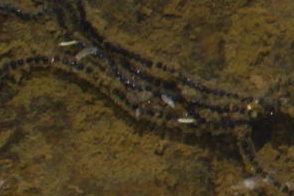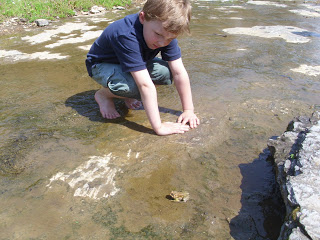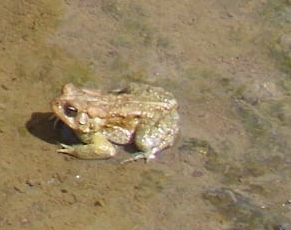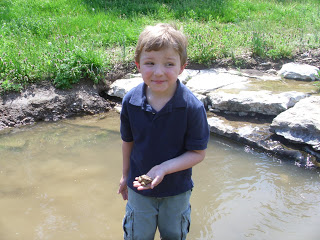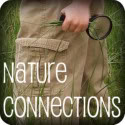During one of our in-search-of-spring walks out to Flat Rock, we came across this:
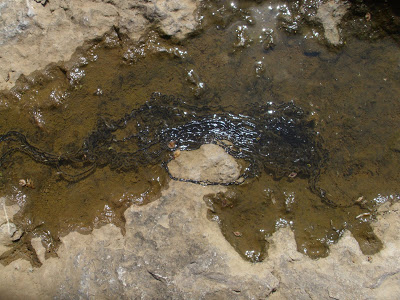 |
| WHAT IS THAT?!? |
At first glance, I thought it was a black string, but after finding more:
and looking at it more closely,
we realized that these WERE NOT strings. As if to confirm this, we came across this:
And so we discovered something that I have never seen: toad eggs. I had no idea that toads lay their eggs in strings; I’ve always seen the more common diagrams of frog egg clusters. But toad eggs are, in fact, laid in strings of jelly in ponds or pools of water. Other interesting facts:
- Toads are a specific type of frog. So it’s not wrong to call a toad a frog!
- When they go for a drink of water, they absorb it through their skin.
- Their throats pulsate because they “gulp” air instead of breathing it like we do. In this way, they force air into their lungs, since they cannot inflate their lungs. (They lack a ribcage.)
- A toad’s hue changes if you place it in a lighter or darker area.
- Their defense mechanism is a poisonous, milky substance that comes out of the “wart” behind the ear, which is called the parotid gland.
- Toads are not slimy. They are dry (unless you pluck them out of the water like we did).
- As the toad grows, it sheds its skin and eats it.
- Toads are a gardener’s best friend – they eliminate insects harmful to crops.
- Though they have “warts,” toads do not cause warts.
- Toads like to have their backs scratched gently.
Yes, Spring is upon us here at Half-a-Hundred Acre Wood. Maybe we will get to see some tadpoles soon. We look forward to actually seeing the life cycle of a frog in real life!
Learn more about amphibians from Anna Botsford Comstock’s The Big Handbook of Nature Study. (Toads are listed on pages 181-189.)
————————————————————————————-
Join us at Nature Connections, a collaborative link collection posted at the end of each month on Living and Learning. Its purpose is to showcase photos of children enjoying nature to inspire all of us to get outdoors more.


